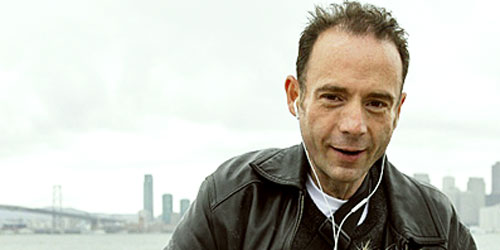By Bob Roehr

"Cure" was the fresh buzzword among researchers at the XIX International AIDS Conference. It was the focus of a two-day pre-conference workshop and a new initiative by the International AIDS Society (IAS). The talk of a cure is driving hope but not yet much funding. And the path to the distant goal is far from clear.
"Today is the end of the first step," Francoise Barre-Sinoussi said at a July 19 news conference that launched a collaborative effort focusing on a cure for HIV. The French researcher, who won the Nobel Prize in 2008 for her part in identifying HIV, has cochaired the IAS effort that has been in development for three years.
"We've achieved all we can achieve with the current strategies" of treatment, said cochair Steven Deeks, "and now we are shifting to the next steps." He is an HIV researcher at the University of California San Francisco.
"The other reason for now is the so called Berlin patient, Timothy Brown (see sidebar)," has proved that a cure can work, Deeks said. "We cannot easily find any virus anywhere; the immune system is back toward normal."
The collaborative research effort, which is open to all who wish to participate, is not so much a roadmap toward a set location, but more a set of principles for working well together. The hope is that by prioritizing questions that need to be answered, using commonly agreed upon research tools, and sharing information the research process might be speeded up.
It draws upon lessons learned from HIV vaccine and microbicide research, where lack of standardization and limited sharing of information impeded progress in the early years, and later took much effort to sort out.
One principle driving their effort is that a cure must be relevant for the entire world, not just the wealthy few in the developed world.
Related Stories:
HIV Cure: Missing Pieces
HIV Cure: Berlin Patient Timothy Ray Brown
What is a Cure?
HIV cure research tends to fall into two broad and not necessarily exclusionary categories that often reflect the disciplines of virology and immunology.
The "eradication" approach seeks to drive HIV from reservoirs where current therapies do not reach, while the "functional" approach looks to strengthen or augment the immune system to achieve a kind of peaceful coexistence with the infection so that it does not cause serious illness. Either would mean the end of daily drugs, if they can be achieved.
HIV commonly infects part of the immune system known as CD4 cells that circulate in blood and tissue. The initial hope was that treating the infection in these cells might result in a cure. But the introduction of highly active antiretroviral therapy (HAART) in the mid-1990s led to the discovery that the virus also resides in resting CD4 cells and HAART only works against active cells.
A theory emerged that if one could activate these resting cells containing HIV, while on HAART, this reservoir might be eliminated.
David Margolis saw that the anticancer drug vorinostat could activate resting CD4 cells in the lab. Because the drug was already approved, the University of North Carolina researcher tried it out in HIV patients.
The drug "was not very effective," he reported at the conference. He had proven the principle that it was possible to activate resting CD4 cells in humans, but he is moving on to try other compounds that might do the job more efficiently. The process is likely to take some time because those molecules are not approved for use in humans.
Other researchers are wary of the eradication approach. They fear that, as with the earlier experience when HAART was introduced, eliminating HIV from one pool of infected cells is likely to reveal other places where the virus is hiding.
The brain is a likely candidate. Some HIV drugs do not penetrate the blood-brain barrier very well and separate genetic variants of the virus can evolve within it. NIH brain researcher Avi Nath is afraid that if the virus is suppressed in the body, "HIV will become primarily a CNS (central nervous system) disease."
Functional Cure
Harvard researcher Daniel Kuritzkes tried a variation of the approach that cured Brown (see sidebar), using less toxic chemotherapy and "normal" stem cells, not ones containing the genetic mutation chosen for Brown.
The "transplanted donor cells replaced the patients' own lymphocytes, and as this occurred, the amount of HIV DNA that was detectible in the patients' blood cells decreased and eventually became undetectable," he said in presenting preliminary findings on two cancer patients for the first time.
"We believe that continuous administration of effective antiretroviral therapy protected the donor cells from becoming HIV infected," while the original immune cells became infected and died off. Kuritzkes said they also saw "a significant decline" in antibodies to HIV, which suggests there is little or no viral replication going on.
However, patients in the study have been on HAART the entire time. The big test will come if and when they stop taking the drugs. Will the virus come back? It is likely to be several years before we know the answer to that question.
Marty Markowitz took a look back at patients at the Aaron Diamond AIDS Research Center in New York. He looked at two key blood markers of immune activation, CD8+ T cells and soluble CD14.
He found they were elevated in most HIV-positive patients whether they were on HAART or not. The exception was 31 patients who started treatment early (19 to 155 days) after they became infected with HIV; they had levels of immune activation that were similar to persons who were HIV-negative.
"When you intervene early, you kind of freeze things" in the course of viral destruction of the immune system, Markowitz concluded. He thinks understanding the biology behind this might suggest possible pathways toward a functional cure.










